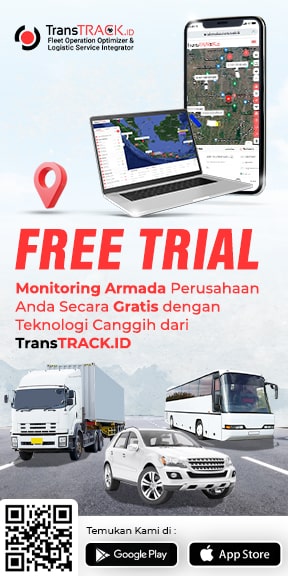Find Out How the Balinese Labeling Process Uses Kreta Bali Smita!
Posted on October 18, 2023 by Nur Wachda Mihmidati

Labeling is now mandatory for tourism transportation. Reliable and quality tourism transportation is the key to providing a satisfying and safe tourism experience. Amid the exotic charm of Bali, maintaining the highest standards in the tourism transportation industry is a must. In this article, we will explore the importance of tourism transport labeling and how implementing a Safety Management System using TransTRACK‘s Fleet Management System can take the industry to the next level.
Bali, as one of the world’s famous tourist destinations, attracts thousands of visitors every year. However, to maintain the island’s reputation as a tourism paradise, it is important to ensure that every trip is a safe, comfortable and quality experience. That is why tourism transport labeling and the use of advanced technology in safety management are becoming increasingly important.
Kreta Bali Smita, the only labeling program that brings the tourism experience in Bali to the pinnacle of quality, has introduced a new era in the island’s tourism transportation industry. Amidst the natural beauty, culture and excitement of Bali, this labeling program brings higher standards, unmatched safety and a better experience for tourists.
Let’s explore why this program is so relevant and how a safety management system can help turn every trip into an unforgettable adventure.
Tourism Transport Labeling Process
The tourism transport program process is an important stage in identifying and recognizing vehicles that are permitted to serve tourists. This process helps in ensuring that the vehicle meets certain safety and quality standards so as to provide a safe and comfortable experience for travelers. The following are the steps that must be taken in the tourism transport labeling process:
Labeling Process: 1. Registration
Applicants can register to create an account as the first step to take part in the Kreta Bali Smita program.
Labeling Process: 2. Company Verification
Applicants will be asked to verify company data as a form of request to create an account.
Labeling Process: 3. Input Vehicle Data
Applicants can enter vehicle data that will participate in this program. This data input is only done once and the vehicle data will be stored in the system.
Labeling Process: 4. Self-Assessment
Applicants can carry out an independent assessment of vehicles that will participate in this program before submitting an audit request.
Labeling Process: 5. Audit Submission
Applicants can submit an audit application if the relevant vehicles meet the criteria during the self-assessment. This submission is done by downloading and filling in the application form and re-uploading the form in the labeling system.
Labeling Process: 6. Agreement
Applicants can visit the agreement document and upload the signed document to the labeling system.
Labeling Process: 7. Receive Audit Schedule
Applicants can receive an audit schedule that has been determined by the certification body in the Assessment Schedule menu
Labeling Process: 8. Audit Process
The applicant will be given information if an audit will be carried out within the specified time. Applicants can see the status of the audit process in the Assessment Schedule menu.
Labeling Process: 9. Upload Proof of Payment
Applicants can upload proof of payment if the status has changed to Waiting for Payment.
Labeling Process: 10. Determination of Label & Certificate
Applicants can see audit results, labels and certificates in the Assessment Results menu.
Why is Tourism Transport Labeling Done in Bali?
Labeling of tourism transport in Bali, as in many other tourism areas around the world, is carried out with the aim of ensuring safety, quality and a good experience for tourists. Some of the main reasons why tourist transport labeling in Bali is carried out include:
- Establish a Regulation of the Minister of Transportation concerning Minimum Service Standards for Public Transport for Non-Route Public Motorized Vehicles.
- Organizing Public Transport for Tourism Needs in Bali Province Within the Framework of Nangun Sat Kerthi Loka Bali Towards a New Era in Bali.
- End the practice of cartels and tourism syndicates charging unreasonable commissions (fees) to transportation service providers.
- Reducing the number of traffic accidents thereby increasing productivity.
Meanwhile, other purposes are:
Tourist Safety
Labeling ensures that vehicles used to serve tourists in Bali meet strict safety standards. This includes regular technical checks to ensure that the vehicle is in good condition and safe to use.
Service Quality
Labeling also ensures that vehicles used for tourism meet certain quality standards. This includes vehicle cleanliness, comfort, and facilities necessary to provide travelers with a comfortable experience.
Environmental Protection
In some cases, tourism transport labeling can also focus on environmental aspects, such as using environmentally friendly vehicles or following regulations on exhaust emissions.
Supervision and Control
Through labeling, the government or tourism authorities in Bali can better monitor and control the tourism transportation industry. This helps prevent illegal practices, unsafe vehicle use, or abuse by operators.
Identifying Legitimate Tourism Transport
Labeling helps visitors and tourists to identify legitimate and authorized tourism transport, so they can feel more confident and safe when using the service.
Tourism Industry Development
By ensuring service quality and safety, labeling also supports the development of the tourism industry in Bali. Satisfied visitors are more likely to return or provide positive recommendations to others.
Thus, tourism transport labeling in Bali is an important tool in maintaining the island’s reputation as an attractive and safe tourism destination. Additionally, it provides protection to tourists and also helps in enhancing the overall tourism experience.
Tier Levels and Benefits of Labeling
The tier level in tourism transport labeling is a rating system used to classify or classify tourism transport operators based on the quality and standards of the services they provide. Each tier level, such as Silver, Gold, and Platinum, has criteria that must be met by operators to achieve that level. The following are the tier levels and the benefits of labeling within these tiers:
Silver Tier
- Public Passenger Transport Safety Management System in accordance with PM No. 85 / 2018
- Transportation operation permit, driver competency certificate
- Fleet Management System
- Minimum Service Standards
Gold Tier
- Silver Level Criteria
- Commitment to implementing ISO 9001
- Features: ABS, safety belts on each seat & comfort facilities: Luxurious interior, reclining seat, armrest, leg rest, pillow and blanket, USB charger, toilet, smoking room, WIFI, TV/LCD, CCTV, DVD/MP3, perfume automatic spray, passenger on seat, personal AC and headlights
Platinum Tier
- Gold Level Criteria
- Implementation of SNI ISO 14001
- Commitment to use clean energy and Battery Based Electric Motor Vehicles (KBLBB)
- Interior criteria: Luxurious leather seats, mini bar, mini pantry, mini entertainment (playstation), massage chair, karaoke, sound system, telephone facilities, Android tablet facilities, and headsets, as well as other facilities (snacks, audio video in 4 languages).
It is important to emphasize the role of safety management systems, especially TransTRACK’s Fleet Management System in improving safety and service quality.
By implementing a trusted safety management system like TransTRACK, tourism transport operators can ensure that they always comply with the highest safety standards. This system helps in real-time monitoring and tracking of vehicles, ensures timely maintenance, and provides valuable data to improve operational efficiency.
To provide an unforgettable tourist experience, safety is key. By implementing a Safety Management System such as the Fleet Management System from TransTRACK, we can ensure that every trip with us is a safe and quality trip. Start implementing a labeling system together with TransTRACK!
Recent Post
Negative Impact of Arrogant Driver Behavior on Traffic Safety
October 31, 2024TransTRACK® Presents at Australia’s Largest Roads & Traffic Expo
October 30, 2024Topic :
vehicle maintenancevehicle safety
 Bahasa Indonesia
Bahasa Indonesia









